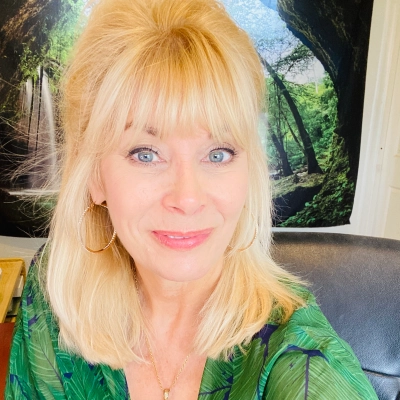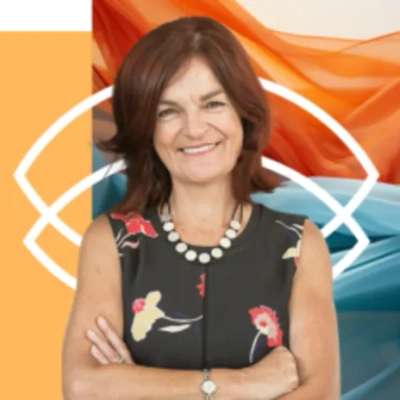7 Unexpected Challenges Wellness Practitioners Face and How to Overcome Them
Wellness practitioners face a myriad of challenges in their quest to help others achieve optimal health. This article delves into unexpected hurdles that these professionals encounter and provides practical solutions to overcome them. Drawing from insights shared by experts in the field, readers will discover strategies to enhance their practice and improve patient outcomes.
- Simplify Treatment Plans to Boost Patient Compliance
- Enhance Virtual Connections in Telehealth Services
- Stand Out by Owning Your Unique Expertise
- Combat Mental Health Stigma Through Education
- Prioritize Self-Care to Prevent Practitioner Burnout
- Implement Micro-Habits for Sustainable Health Changes
- Address Hidden Stories Behind Wellness Challenges
Simplify Treatment Plans to Boost Patient Compliance
One unexpected challenge I've consistently faced as a wellness practitioner is patient compliance—even when someone is highly motivated to reverse a condition like Type 2 diabetes, following through on a treatment plan can be tough. The root causes I address—such as infections, hormone imbalances, and liver function—require more than just taking a pill. They demand lifestyle changes, dietary shifts, and consistency with supplements or protocols that aren't always easy to maintain.
What helped me overcome this challenge was simplifying the process and breaking the plan down into manageable, personalized steps. I began using visual tracking tools and digital platforms (like Healthie) to boost accountability. I also realized that education is key—when patients understand why they're doing something, they're more likely to stick with it. Explaining, for instance, how B vitamins affect nerve repair or how blood sugar balance supports hormone production helps make the invisible visible.
My advice to other practitioners facing this challenge is: never assume compliance equals understanding. Patients may nod, but that doesn't mean they fully grasp the "why" behind your recommendations. Use metaphors, real-life analogies, and give them wins early in the program to build momentum. And always check in on barriers—whether it's overwhelm, finances, or skepticism—and troubleshoot from there. Compliance improves when patients feel heard, understood, and supported—not just instructed.

Enhance Virtual Connections in Telehealth Services
One unexpected challenge I have faced as a psychiatric nurse practitioner offering telehealth services is the difficulty of building a therapeutic connection through a screen. While telehealth has greatly improved accessibility, particularly for patients in rural or underserved areas, research shows that nearly 40 percent of individuals still feel less connected during virtual sessions compared to in-person care. Early in my practice, I noticed that some patients were hesitant to open up or fully engage, which limited progress in treatment.
To overcome this, I focused on enhancing the virtual experience by creating a calm and private environment, using active listening techniques, and encouraging patients to treat telehealth appointments with the same importance as in-person visits. Over time, these adjustments significantly improved trust and rapport, and patients became more consistent with follow-ups.
My advice to others facing similar challenges is to embrace the flexibility of telehealth while actively addressing its limitations. Simple practices like maintaining eye contact, minimizing technical disruptions, and checking in frequently about patient comfort can make a big difference. According to the American Psychiatric Association, more than 80 percent of patients report satisfaction with telehealth, which shows that with the right approach, virtual care can be both effective and sustainable.

Stand Out by Owning Your Unique Expertise
The Sea of Sameness
There are thousands of us claiming to help people "heal," "align," or "transform."
When you're deeply intuitive, heart-centered, and energetically sensitive, the idea of standing out feels like a popularity contest you never signed up for.
However, here's what I've learned:
The real challenge isn't visibility.
It's authentic differentiation—and that starts with unapologetically owning your magic.
For me, that meant narrowing in on my specialty:
Soul-Aligned Purpose through the Akashic Records.
I stopped trying to market like a mindset coach or spiritual influencer.
I focused on the clients I serve best—visionary leaders who've already achieved success but still feel off-track.
I defined my lane, named my unique process, and let my weird (aka my wisdom) lead the way.
Here's what worked for me:
1. Got crystal clear on my soul specialty.
If you blend modalities, name your fusion. Don't sell the tools—sell the transformation.
2. Stopped diluting my voice.
Polished isn't powerful. Precision is. Be bold about who you are not for.
3. Embodied my message.
If you're helping others with clarity, purpose, or peace, you damn well better be walking that path, too. People feel your frequency long before they read your bio.
4. Created my own category.
Don't be just another coach, healer, or guide. Become the only one who does exactly what you do.

Combat Mental Health Stigma Through Education
One unexpected challenge I have faced as a psychologist is the growing resistance to seeking therapy due to stigma and misconceptions around mental health. Despite the increasing awareness, data from the National Alliance on Mental Illness shows that nearly 60 percent of adults with a mental health condition do not receive treatment, often because of fear of judgment or lack of understanding.
Early in my practice, I noticed that many clients delayed seeking help until their struggles had significantly worsened, which made treatment more complex. To overcome this, I began incorporating psychoeducation into every session and community engagement efforts, focusing on normalizing therapy as a form of self-care rather than a sign of weakness.
By presenting evidence-based information and practical examples of how therapy can improve daily functioning, clients became more open to treatment and proactive in their mental health journey. My advice to others facing this challenge is to remain patient, empathetic, and persistent in their educational approach, both within and outside of therapy sessions.
Building trust, providing accessible resources, and framing therapy as a positive investment in well-being can gradually shift perceptions and reduce barriers to care, creating lasting impact for individuals and communities.

Prioritize Self-Care to Prevent Practitioner Burnout
One unexpected challenge I faced as a wellness practitioner was realizing that even with all the knowledge and tools, I wasn't immune to burnout, especially while trying to care for others and my own family at the same time. I overcame it by setting clearer boundaries, simplifying my routines, and prioritizing rest as a non-negotiable part of wellness. My advice to others is this: don't wait for exhaustion to force you to slow down. Build in time for yourself the same way you'd schedule a client because your energy is your most valuable asset, and protecting it makes you a better practitioner.

Implement Micro-Habits for Sustainable Health Changes
As an emergency department medical officer, the toughest challenge wasn't a clinical one; it was attempting to induce true lifestyle change in 6 to 8 minute visits when patients were asking for a quick fix like an injection or an IV drip instead of a plan. I continued to see the same individuals come back with the same issues and spikes in hypertension, knee aches, and acid reflux because our recommendations were too large for the dynamics of their lives and changes.
I fixed it by moving to "minimum-dose" health: one micro-habit, one measurement, one milestone. I employed a 90-second script, agreed on one change (e.g., a 10-minute walk after dinner or a palm of protein added to lunch), wrote an if-then plan, and scheduled a clinic check-in. I also had a bilingual pocket card with three micro-habits and red flags.
One impressive victory was a middle-aged woman with knee pain and elevated BP who replaced the all-or-nothing gym regimen with a post-dinner walk and an easy protein goal. In a month, her pain scores and blood pressure were improved, and she ceased rebounding to the ED.
My suggestion would be to reduce the change and create one habit that withstands bad days, measure a single leading metric like steps, sleep, or waist. Create accountability and be gentle to yourself since consistency is better than intensity.

Address Hidden Stories Behind Wellness Challenges
Hi, I'm Jeanette Brown, a wellness coach in my sixties, founder of personality growth platform jeanettebrown.net. I work with many 40+ clients on simple, sustainable behaviors and I lead the Reset Your Life Compass program on The Vessel.
Lately, I realized something I didn't see coming — how often people showed up expecting me to hand them a checklist: eat this, stretch that, breathe here. They call it "wellness."
But after decades of teaching and coaching, I know life doesn't fit into tidy lists. What really caught me off guard was how much of my work had nothing to do with nutrition or exercise and everything to do with hidden stories: grief after retirement, the loneliness of an empty nest, the quiet stress of always holding things together.
I once worked with a woman convinced her problem was weight gain. A few conversations later, it was clear she was mourning her kids leaving home. That's when I realized wellness is far from green smoothies or step counts. That's why I try to instead teach people to give themselves permission to feel human again.
And the funny thing is that once she stopped punishing herself with "rules" and started tending to her loneliness, the healthy habits became natural. That's the part most people don't expect: healing often starts far away from the gym mat.
Thank you for this insightful query!
Cheers,
Jeanette Brown,
Personal Coach & Founder of Jeanettebrown.net


